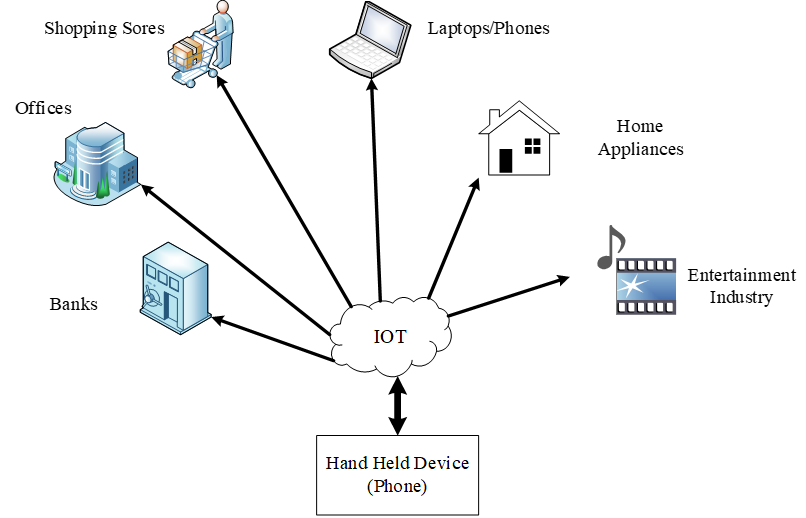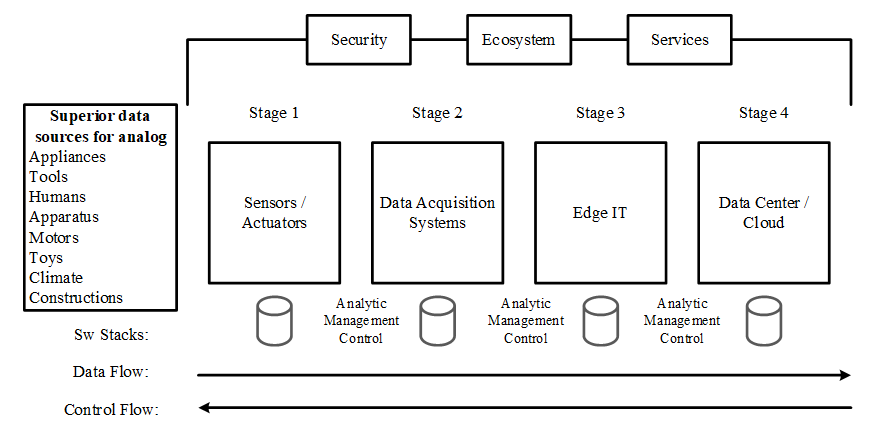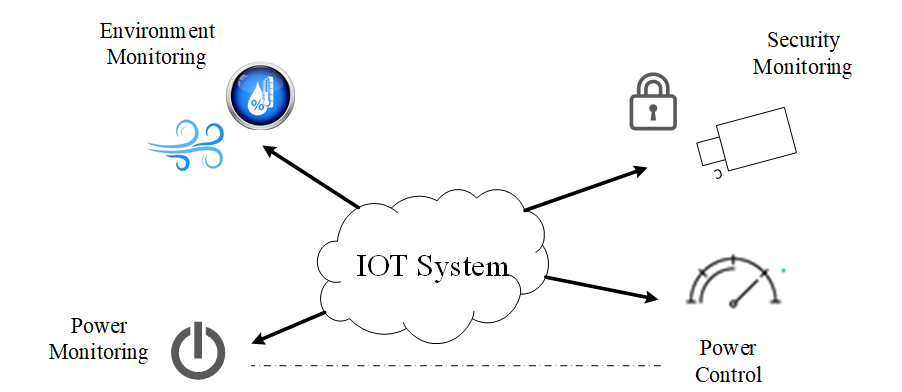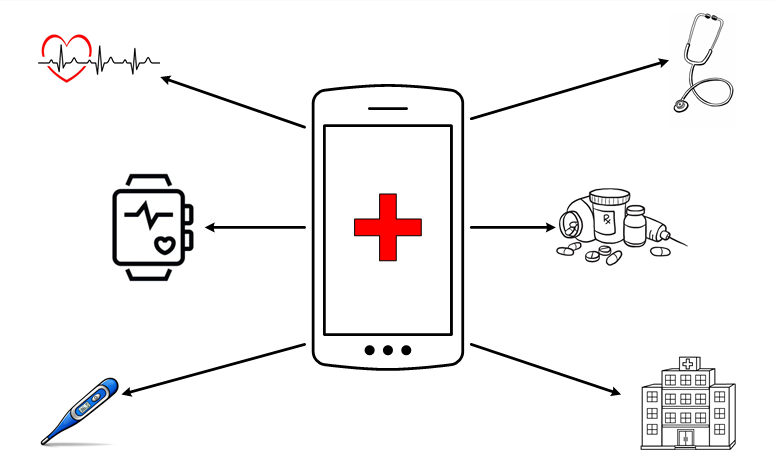The Ultimate Guide to IoT Architecture
22/06/2021, hardwarebee
This article describes the Internet of Things (IoT) architecture and shows how IoT is transforming the globe into a smart world. Based on IoT architecture presented in this paper, smart cars, smart homes, and smart cities, anything around you may become a smart device.
The Internet of Things (IoT) integrates all products around the world from the sensor to the digital cloud. It links computers, networks and individuals across the city and forms a dynamic distribution system. In that respect, IoT has included smart grids, smart homes, smart cities and internet. Due to its wide range of applications and diverse technologies, IoT has provided many possibilities in recent years. Figure 1 shows the Internet of Things (IoT) general architecture, as is correlated with various devices.

Figure 1: The Internet of Things (IoT) Network Architecture
IoT Architecture
The Internet of Things architecture is a strong and profound concept that is based on an architecture that allows for all the parts to work together flawlessly.
Four Stages IoT Architecture
The four-stage IoT architecture can be summarized as follows:
- Sensors and actuators
- Internet getaways and Data Acquisition Systems
- Edge IT
- Data center and cloud
The figure below shows a more thorough representation of these steps.

Figure 2: IoT architecture’s four phases
Sensors and Actuators
The first layer is the physical layer of sensors, capable of sensing and collecting environmental data. Connected devices provide the essence of the internet of things which is the data as the base of each IoT system. They need sensors to collect physical characteristics inside and outside of the environment or the item itself. They can be integrated into the devices themselves or employed for the measurement and collection of telemetry data as independent items. For example, look at farm sensors whose duty is to detect factors like air temperature, soil moisture, soil pH or crop sunshine exposure.
Another important feature of this layer are the actuators. You may transform data from smart devices into actual action through close collaboration with sensors. Take a smart watering system with all the sensors. The system evaluates the situation in real time using sensor data and tells the actuators, if moisture on the ground falls below set value, to open chosen water valves. The valves are kept open until default sensors return. Of course, all this happens without the intervention of one person.
For connected objects it is also necessary not only to be able to interact bi-directionally with the relevant gateways or data gathering systems but also to be recognized each other, to chat together, to share information and cooperate in time to benefit from the complete operation. It is not an easy task for resourcing and battery-operated gadgets in particular, since such communication requires a lot of computing power and utilizes significant energy and bandwidth. A strong architecture may thus be employed only provided the correct, safe and lightweight communication protocol is applied.
A robust architecture can thus only allow effective device management when it uses proper, safe and lightweight communication protocols, including the leading standard Protocol for the management of lightweight low-power devices common to many IoT applications, Lightweight M2M.

Figure 3: Sensors and Actuators in the IoT architecture
Gateways and Data Acquisition
This layer works closely with sensors and actuators on certain devices; it is nonetheless defined as a different stage of IoT architecture as essential for data collection, filtering and transfer to the edge of cloud-based infrastructure and platforms. Data aggregation, selection, and transit capabilities should be highlighted with the mass input and output of million device systems. The connecting points for the other layers are gateways and data collection systems as mediators between the linked elements and the cloud and the analysis.
Gateways at the edge of the OT and IT worlds provide for communication between sensors and the rest of the system by transforming sensor data to forms which can be readily transferred and used by other system components throughout the whole system. In addition, they are capable of controlling, filtering and selecting data to reduce data transfer to the cloud, which has a beneficial effect on transmission costs and reaction times of the network. Gateways thereby provide a location for local sensor data preparation and for subsequent processing into usable packages.
Security is another characteristic of gateways. Gateways regulate information streams in both directions and prevent IoT cloud data infringement by utilizing appropriate encryption and security technologies to reduce the threat of harsh external attacks on IoT devices.

Figure 4: Gateways and Data Acquisition stage in the IoT architecture
Edge Analytics
Edge devices may offer significant benefits, especially in large-scale IoT projects, however they are not needed in every IoT architecture. In view of the IoT cloud platforms and restricted accessibility, Edge systems may provide additional flexibility in IoT data processing and analysis. Edge Computing has recently experienced a significant rise in popularity in industrial internet ecosystems, given the crucial speed of data processing in numerous industrial internet applications.
Since it is possible to physically locate the edge infrastructure closer to the data source, it is easier to use the IoT material at first. In this case, only bigger bits of data are transferred and the cloud has to be processed in fact. By minimizing network exposure, security may be considerably enhanced while reducing bandwidth and power utilization can improve the efficiency of corporate resources.
Data Center / Cloud Platform
The cloud, when sensors become neurons and the gateway become the backdrop, is the brain of the Internet of things. Contrary to cutting-edge solutions, a data center or cloud-based system is meant to store, processes and analyze large volumes of data for a deeper insight that is never possible with advanced data analytics engine and machine learning processes.
Over the last several years cloud computing has been significantly accepted (especially in IoT design) can contribute to quicker production rates, less unexpected downtime, lower energy consumption and a number of other economic benefits.
The cloud provides corporate intelligence and display alternatives which allow employees to connect to the system, run and monitor it and, when equipped with adequate usage solutions, make intelligent decisions based on reports, dashboards and data seen in real-time.
IoT Architecture: An Example in Healthcare
Healthcare is one of the leading and foremost industries in the Internet of Things technology. This is because IoT solutions allow patients benefit from high-quality care and combine it with long-term, yet substantial savings.
The core IoT applications in healthcare include, without limitation, improving patient security and employee safety, reducing needless health care expenses and providing enough assistance in time by using intelligent smart health and emergency IoT-enabled devices.
Given the enormous problems faced by the population, aged care and the monitoring of diseases such as diabetes and cardiac conditions are one of the major concerns in public health. Prevention therefore plays an important part in providing older people with improved health. It is therefore not unbelievable, especially with health surveillance where dependability, safety and accurate management are a requirement, that the Internet of Things takes precedence.
An automated older patient monitoring system, for example, demands for data collectivity and real-time analysis, network connectivity for infrastructure access services and a user interface and support application for presentation. The architecture of the body sensors therefore has to be integrated to gather patient data, filter and redirect data, analyze and wi-fi the data to the cloud and serve as a tool for transmitting the data to remote locations, for instance emergency and healthcare providers for monitoring and monitoring purposes.

Figure 5: Internet of Things architecture: An Example in Healthcare
The offered healthcare surveillance system must make diverse users accessible. The healthcare practitioner, the patient and any family members or caretakers, for instance. In view of this, data security and privacy are one of the problems of adopting IoT in health monitoring. When transmitting the data, security may be obtained via encryption. For instance, a microprocessor ensures a secure communication mechanism for encryption through a secure layer of the socket (SSL).
Conclusion
IoT architecture can vary from solution to solution; however, its key components are the four building blocks that are vital to the delivery of fundamental features that make the IoT climate viable. It is important that you do not be overwhelmed with the perceived complexity of the IoT architecture and that the attractive and future-oriented IoT project is not overlooked.
It should be said that increasing attention on the development of a robust IoT architecture has led to greater business value being extracted from its data to provide them a competitive edge and help them to outperform their competitors.
While more work still has to be done to address technical fragmentation in IoT, it is evident that substantial efforts have been taken to include the widest spectrum of IoT technologies and standards (examples: LwM2M and oneM2M).
However, before this comes true, IoT promises are realized not necessarily through the development of a single IoT technology, but instead through the construction of a strong, future-proof, scalable and secure IoT architecture, in order to efficiently capture and manage, analyze and use all technologies in the collection, management and use of data.











